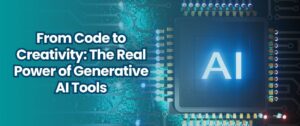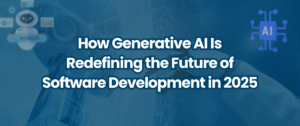How to Evaluate the Success of a Custom AI Deployment

Introduction
Deploying a custom AI solution can be a game-changer for businesses. However, the real measure of success lies not just in the deployment, but in how effectively it meets your organization’s goals. Without proper evaluation methods, you might miss critical insights into performance, impact, and areas for improvement. This article explores a complete framework for evaluating the success of custom AI deployments.
Why Evaluation Matters in AI Projects

AI solutions often involve significant investment—both in terms of time and budget. A lack of structured evaluation makes it difficult to determine whether the AI system is performing as expected. More importantly, it becomes nearly impossible to optimize or scale the solution. Effective evaluation ensures that the technology continues to align with business needs, delivers value, and remains trustworthy over time.
Aligning AI Goals with Business Objectives
Success metrics should always connect back to your company’s larger goals. For example, if your AI tool is intended to enhance customer service, then key metrics might include customer satisfaction scores or reduced support ticket handling times. Clearly defining these goals in advance ensures that your evaluation efforts are focused and relevant.
Defining Success in Custom AI Deployments
Setting Clear Objectives and KPIs
Start by outlining the expected outcomes of the AI deployment. These objectives should be specific, measurable, and directly tied to either technical performance or business value. For example, reducing manual data entry by 40%, increasing lead conversion by 25%, or improving product recommendations accuracy.
Technical vs Business KPIs
Technical KPIs typically measure aspects such as model accuracy, latency, and system uptime. Business KPIs, on the other hand, evaluate financial and operational outcomes like cost savings, revenue generation, and improved customer engagement. A successful evaluation strategy considers both.
Pre-Deployment Benchmarking
Establishing a Baseline
Before rolling out an AI model, it is important to document how processes currently perform. Establishing a baseline allows you to measure improvement over time. Metrics such as average handling time, customer feedback, or manual effort required for a task can serve as comparison points.
Identifying Current Challenges
Speak with stakeholders and users to understand the pain points that the AI system aims to resolve. These insights can help you tailor the evaluation criteria and ensure that success is measured against the problems that matter most to your business.
Key Performance Indicators (KPIs) to Track
Model Accuracy and Precision
Accuracy refers to how often the AI makes correct predictions, while precision measures how often the AI’s positive predictions are actually correct. These indicators are especially important in applications such as fraud detection or medical diagnosis, where errors can have serious consequences.
Response Time and Scalability
Performance is also about speed and adaptability. Response time measures how quickly the AI delivers output, while scalability assesses whether the system can handle increased load without degradation in performance. These are critical for customer-facing applications and high-traffic platforms.
Uptime and Reliability Metrics
Reliability metrics show how consistently the AI operates. High availability is essential, especially for systems embedded in live operations. Regular monitoring of uptime, error rates, and system crashes helps ensure long-term stability.
Business-Centric Metrics
Cost Reduction
An AI system should reduce operational expenses by automating repetitive tasks, decreasing error rates, or streamlining workflows. Comparing post-deployment costs with historical data provides a direct view of financial impact.
Revenue Uplift
If your AI application contributes to marketing, sales, or customer acquisition, track how it influences revenue. Analyze before-and-after figures to determine how much the AI system has improved conversion rates, lead generation, or upselling opportunities.
Operational Efficiency
Evaluate how much faster and more accurately processes are completed with AI. This could include time saved in data processing, improved inventory management, or better decision-making with predictive analytics.
Customer Satisfaction and Retention
For customer-facing AI solutions, feedback is crucial. Use customer satisfaction scores (CSAT), Net Promoter Scores (NPS), and retention metrics to understand how users perceive the AI system and whether it improves their experience.
User Adoption and Feedback
Measuring Internal Usage
Even the most advanced AI tool is ineffective if your team does not use it. Track usage metrics like login frequency, completed actions, or time spent interacting with the tool. High adoption suggests the AI solution is well-integrated into your workflows.
Collecting Feedback from Users
Encourage users to provide feedback regularly. Surveys, interviews, or in-app feedback features can offer valuable insights into usability, trust, and areas for improvement. Incorporating this feedback into updates ensures continuous alignment with user expectations.
Error Analysis and Debugging
Root Cause Analysis
Errors in AI output should be investigated promptly. Analyze whether these errors stem from data quality issues, model limitations, or integration failures. Identifying the root cause prevents future occurrences and boosts performance.
Tracking Error Rate Trends
Consistently track how often your AI system makes incorrect predictions. Over time, error rates should decline as the model learns or is fine-tuned. A stagnant or increasing error rate is a sign that retraining or revision is necessary.
AI Model Explainability
Building Transparency
Users and stakeholders need to understand how AI arrives at its conclusions. Transparent systems increase trust and improve user engagement. Use explainability techniques, such as decision trees or model interpretability tools, to demystify results.
Meeting Ethical and Compliance Standards
AI must be designed to avoid bias and discrimination. Regular audits and compliance checks ensure your system meets legal and ethical standards—especially critical in industries like finance, healthcare, and hiring.
Integration with Existing Systems
Compatibility with Workflows
Evaluate how easily the AI solution fits into your current systems and processes. Poor integration can disrupt operations and reduce user acceptance. Seamless compatibility ensures that AI becomes a helpful extension of existing tools.
Technical Infrastructure Readiness
Confirm that your backend infrastructure, APIs, and databases can support the AI system’s needs. Performance bottlenecks or data silos can severely limit the effectiveness of the deployment.
Security and Data Privacy
Monitoring for Threats
Ensure that sensitive data processed by the AI system is secure. Set up monitoring tools to detect breaches, unauthorized access, or data leaks. AI security should be treated with the same seriousness as any other IT system.
Regulatory Compliance
Ensure your deployment adheres to laws and regulations such as GDPR, HIPAA, or other data protection standards. Use automated audit trails and regular security reviews to maintain compliance.
Continuous Improvement and Retraining
Managing the AI Lifecycle
AI systems evolve with data and use. Set up regular intervals for performance review, model retraining, and system updates to maintain accuracy and relevance over time.
Creating Feedback Loops
Use data from system performance, user interaction, and business outcomes to continuously refine your model. Incorporating these feedback loops ensures that your AI keeps improving and adapting.
Case Studies and Real-World Insights
Successful Deployments by Codeed Inc.
At Codeed Inc., we have helped several clients across industries implement AI solutions that significantly improved efficiency. For example, our AI-based automation in the retail sector led to a 45% reduction in manual processing time and a 28% increase in sales within the first six months of deployment.
Lessons from Common Failures
Failures often result from overestimating capabilities or ignoring user feedback. We’ve learned that continuous evaluation, clear communication, and phased rollouts are key to successful adoption.
Tools for Measuring AI Success
Industry-Standard Platforms
Tools such as DataDog, Grafana, and Azure AI Metrics offer dashboards and real-time monitoring to evaluate system performance and user engagement.
Custom Solutions
At Codeed Inc., we also offer custom analytics dashboards tailored to your specific use case, allowing granular tracking of KPIs and easier reporting for business leaders.
Conclusion
Evaluating a custom AI deployment is an ongoing process that requires attention to both technical and business metrics. By setting clear goals, collecting the right data, and listening to users, organizations can ensure that their AI systems deliver real value. Success is not about a perfect launch—it’s about continuous improvement and alignment with your company’s evolving needs.
If you’re ready to maximize the impact of your AI systems, Codeed Inc. can help. From deployment to performance tracking and optimization, we provide comprehensive support to make AI work for your business.
FAQs
What is the most important metric in AI evaluation?
There is no single answer, as it depends on your goals. However, a balance between technical accuracy and business impact is essential for a holistic evaluation.
How long should it take to evaluate AI deployment success?
You can often see early indicators within 3 to 6 months. Full business impact, however, may take up to a year depending on the application.
Can a custom AI project fail even if the model is accurate?
Yes. If the system lacks usability, poor integration, or does not align with business needs, it may still fail to deliver value.
How often should AI models be evaluated?
Models should be evaluated at least quarterly or after any significant change in data patterns or business objectives.
What are early signs of AI success?
Early signs include increased usage, positive user feedback, reduced manual workload, and improvements in the targeted business metrics.
Table of Content
 5.0
5.0
Unlock your new design team today
Get a team of skilled professionals and all the benefits that come with top-grade in-house designers—for a flat fee.
Book a free call


